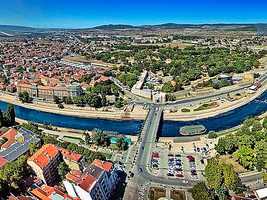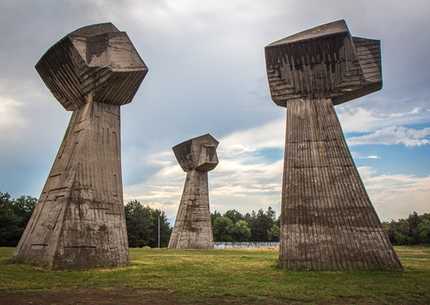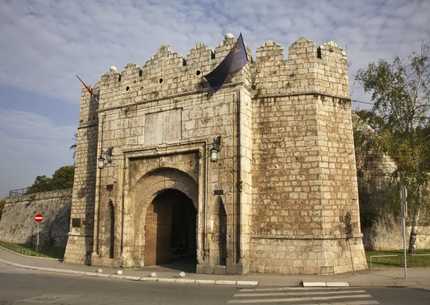
Niš lies in a wide basin on the Nišava River. Two main roads of the Balkans - one leading to Sofia and Istanbul, other to Skopje and Thessalonica - have since time immemorial ran along these two rivers, as they still do today. However, Niš is not a dreary traffic hub or a boring stop where one changes the trains. Niš is a city of extraordinarily rich and tumultuous history, worthy of its position. The name to the settlement was given by the Celtic Scordisci tribe, the first inhabitants of Niš know by name, who succumbed to the Romans around the time of Christ's birth. Niš/Naissus earned its fame throughout the world as the birthplace of Emperor Constantine the Great. The Fortress was built on the site which used to be the heart of Roman, Byzantine and Medieval Niš. The fortress has a polygonal base with seven sides and eight bastions, with over two kilometers of 8m tall and 3m thick ramparts. From the original four, two gates are now in ruins. Mediana is one of the most important Serbian Late Antiquity archeological sites, built between III and the beginning of the IV century. It was constructed during the reign of Emperor Constantine the Great and his heirs. Today, Mediana is an archeological park where one can see remains of the villa with the peristyle with more than 1.000m2 of the valuable flour mosaics. Skull Tower is probably the best-known sight in Niš, a unique testament to the long and bloody struggle of Serbs for their freedom. It was constructed following the Battle of Čegar of May 1809, during the First Serbian Uprising. Čegar is the name of the hill whereon 31st of May 1809, the Serbian insurrectionists suffered their greatest defeat. In the vicinity of Nis, on the Cegar Hill, the location of the famous First Serbian Uprising battle, there is a monument put up in memory of the courageous soldiers and their commander Stevan Sindjelic. The concentration camp in Crveni krst area was established in 1941 and abandoned by Germans in 1944. On February 12th, 1942 a massive escape was attempted by 147 prisoners who attacked the guards, 105 of them managed to break through - one of only a few of such examples in World War Two. Today the site of the concentration camp serves as a museum "12. February". Housed in the original premises the museum sharts the history of the camp and faiths of its prisoners, allows you an insight into their living conditions and exhibits their personal items. The entrance to the campgrounds lies facing the Red Cross railway station. Bubanj is the hill above the village of the same name where Nazis shot more than 12.000 people brought from the Red Cross Concentration camp. The place was marked in 1963 by an impressive memorial - three giant concrete fists surging to the air, work of sculptor Ivan Sabolić. Each summer for over twenty years, the Niš Fortress becomes a center where top musicians from the whole world perform. Since the very beginning, Nišville has been a unique event that managed to combine “traditional” forms of jazz with the local sounds.
To receive our best monthly deals
JOIN THE NEWSLETTER



